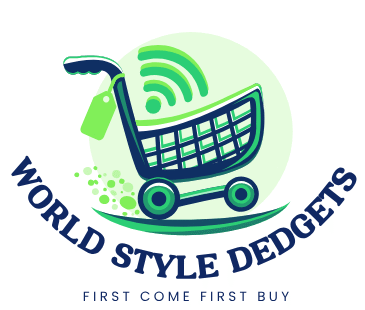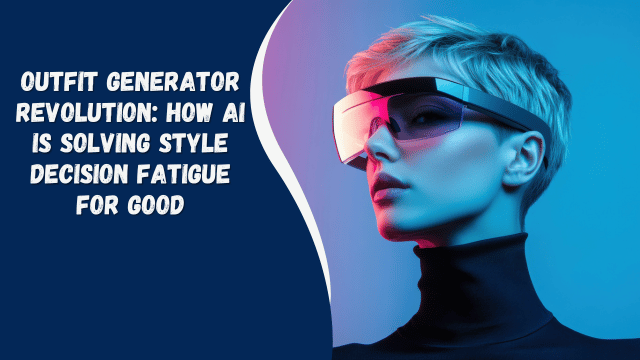Meta Description: Beat decision fatigue with the ultimate guide to AI outfit generators. Learn how these apps work, the best tools for your style, and how to use them to build a smarter, more sustainable wardrobe.
Outfit Generator Revolution: How AI is Solving Style Decision Fatigue for Good
You stand in front of your closet, which is undeniably full of clothes, and yet you feel like you have nothing to wear. This universal experience, known as “decision fatigue” or “closet paralysis,” consumes precious mental energy every single morning. But what if you had a personal stylist available 24/7, one that knew every item in your wardrobe and could instantly propose fresh, exciting combinations you’d never considered?
Enter the outfit generator—a category of AI-powered apps and tools that are fundamentally changing how we interact with our wardrobes. These platforms promise to end style ruts, maximize the value of every garment you own, and transform getting dressed from a chore into a creative, joyful experience.
This isn’t just a fleeting tech trend; it’s a paradigm shift in personal style. This comprehensive guide will dissect the world of outfit generators, exploring how they work, their profound benefits, their limitations, and how you can leverage them to build a more intentional, versatile, and sustainable closet.
Beyond the Algorithm: How Do Outfit Generators Actually Work?
At their core, outfit generators use a combination of technologies to provide style recommendations. Understanding the mechanics demystifies the magic and helps you set realistic expectations.
1. The Virtual Closet Model
This is the most common and powerful type of generator. The process is simple but effective:
-
Digitize Your Wardrobe: You manually upload photos of your clothing items, categorizing them by type (e.g., top, bottom, dress), color, pattern, and season. Some advanced apps use computer vision to auto-tag these attributes.
-
The Algorithm Takes Over: The software’s algorithm, trained on vast datasets of fashion rules and style combinations, analyzes your virtual closet.
-
Combinatorial Magic: It then generates every possible valid combination based on pre-programmed “style rules” (e.g., pairing a patterned top with a solid bottom, complementary colors, appropriate layering).
-
The Result: You receive a feed of complete outfits built exclusively from clothes you already own.
Examples: Stylebook, Whering, Pureple.
2. The Style Inspiration & Shopping Model
These generators don’t require you to input your own closet. Instead, they function as style discovery engines.
-
AI-Powered Curation: You input your style preferences (e.g., “minimalist,” “boho,” “office chic”). The AI then scours the web or its partnered retailers to create inspirational outfit mood boards.
-
Direct Shopping Integration: The outfits are typically built with shoppable items, making it a powerful tool for e-commerce. The focus is less on utilizing your existing wardrobe and more on discovering new pieces that fit an aesthetic.
-
Personalization: Over time, the AI learns from your likes and dislikes to refine its suggestions.
Examples: Amazon’s Outfit Creator, Pinterest (using style search), various retailer-specific tools.
3. The Hybrid Model
The most advanced platforms are beginning to blend both concepts. They allow you to catalog your own items and then suggest new purchases that would perfectly complement your existing wardrobe, effectively acting as a personal stylist for both shopping and styling.
The Tangible Benefits: Why You Should Use an Outfit Generator
The value of these tools extends far beyond just telling you what to wear.
-
Eliminate Decision Fatigue: By pre-planning your outfits for the week or simply having a bank of options on demand, you reclaim mental bandwidth for more important decisions. This reduces morning stress significantly.
-
Discover Hidden Gems in Your Closet: The algorithm has no sentimental attachments or biases. It will fearlessly pair that vintage skirt you never wear with a basic tee you overlook, often resulting in surprisingly brilliant and new-to-you combinations.
-
Shop Your Own Closet & Save Money: When you see the hundreds of new outfits you can create from your existing clothes, the urge to make impulse purchases diminishes. You become more aware of what you actually own and what gaps truly exist in your wardrobe.
-
Plan for Trips and Events Effortlessly: Most closet apps allow you to create dedicated “packing” lists. You can pre-plan every outfit for a vacation, ensuring you pack efficiently and stylishly without overpacking.
-
Build a More Sustainable Wardrobe: By maximizing the use of your current clothes, you actively participate in a “slow fashion” model. You buy less, waste less, and develop a deeper appreciation for the items you have.
-
Develop Your Personal Style: As you save and rate the outfits the generator creates, you begin to see patterns in what you genuinely love. This self-reflection helps you define and refine your personal style identity, making future shopping more intentional.
Choosing Your Digital Stylist: A Comparison of Approaches
| Generator Type | Best For… | Pros | Cons | Key Example Apps |
|---|---|---|---|---|
| Virtual Closet | The practical user who wants to maximize their current wardrobe, save money, and plan outfits. | Most direct ROI, eliminates decision fatigue, promotes sustainability. | Time-consuming initial setup (digitizing your closet). | Stylebook, Whering, Pureple |
| Style Inspiration | The user seeking new ideas, trends, and shopping inspiration. Discover new brands and styles. | Fast, no setup required, great for discovering new trends. | Can encourage impulse buying, not personalized to your specific closet. | Pinterest, Amazon Outfit Creator, Looklive |
| Hybrid Model | The user who wants a holistic style assistant for both styling existing clothes and making smart new purchases. | Most comprehensive approach, truly acts like a personal stylist. | Can be complex; may have subscription fees; still an emerging technology. | (This space is evolving rapidly) |
The Human Touch: Limitations and How to Overcome Them
An outfit generator is a powerful tool, but it is not a perfect substitute for human creativity and context.
-
The Garbage In, Garbage Out (GIGO) Principle: The AI only knows what you tell it. If you fail to tag items accurately (e.g., not marking a sweater as “warm”), it might suggest a wool sweater for a hot summer day.
-
Lack of Nuance and Context: The algorithm doesn’t know you have a big presentation today and need to feel extra confident. It doesn’t understand that those shoes, while beautiful, give you blisters after two hours. You must still apply your own human judgment to its suggestions.
-
The Initial Setup Hurdle: Cataloging a full wardrobe can take several hours. The pro tip: Start small. Begin with just one category, like your tops, or only your favorite items. You don’t need to digitize every single sock on day one.
How to Get the Most Out of Your Outfit Generator
-
Be Meticulous During Setup: Take clear, well-lit photos against a neutral background. Tag colors, patterns, and seasons accurately. This initial effort pays massive dividends in the quality of your recommendations.
-
Use the Rating System: Most apps let you “love” or “trash” generated outfits. Use this feature relentlessly. This is how the algorithm learns your specific taste and gets smarter over time.
-
Don’t Be a Slave to It: Use the generator as a source of inspiration, not an absolute authority. If it suggests a pairing you’re unsure about, try it on! You might be surprised. But if you hate it, just swipe past it.
-
Leverage the Planning Tools: The real magic happens when you use the calendar feature to plan your week every Sunday. This habit alone can transform your mornings.
The Future of Getting Dressed
The technology is only getting smarter. We are moving toward:
-
Integration with Smart Closets: Imagine a camera that automatically catalogs your clothes as you hang them up.
-
Hyper-Personalized AI Stylists: Algorithms that don’t just know your clothes but also your calendar, the local weather, and even your mood.
-
Augmented Reality (AR) Try-Ons: Generating an outfit is one thing; seeing a photorealistic simulation of you wearing it before you even get dressed is the next frontier.
Conclusion: Your Wardrobe, Optimized
An outfit generator is more than an app; it’s a mindset tool. It encourages mindfulness about what you own, creativity in how you use it, and intention in what you add. It hands you back the time, money, and mental energy that “closet panic” steals away. While it requires an initial investment of time to set up, the long-term payoff—a streamlined routine, a rediscovered love for your clothes, and a defined personal style—is invaluable. In the quest to get dressed with confidence and ease, your newest and most powerful ally is waiting in your smartphone.
Frequently Asked Questions (FAQs)
Q: What is the best free outfit generator app?
A: Many apps offer free versions with limited features. Pureple is a great free option for a basic virtual closet. Pinterest is the undisputed king of free style inspiration. For full functionality (like unlimited items or packing lists), most advanced apps require a one-time purchase or a subscription.
Q: Isn’t it a huge hassle to take pictures of all my clothes?
A: It can be, but it’s a one-time task that gets easier. Pro tip: Do it while watching TV or listening to a podcast. Start with your 10-20 favorite items first to get immediate value, and then add more over time. The time saved on future mornings makes it worth it.
Q: Can these apps really understand my personal style?
A: They can learn it, but you have to teach them. The more you use the rating features (loving or dismissing suggestions), the better the algorithm becomes at predicting what you’ll like. It’s a collaborative process between you and the AI.
Q: Are my data and clothes photos private?
A: You should always read the privacy policy of any app you use. Reputable style apps state that your closet data is private and not used for advertising. Your personal wardrobe is not their business model; your subscription is.
Q: What if the app suggests an outfit that I would never wear?
A: That’s perfect! This is how you discover new combinations. The key is to try it on with an open mind. Sometimes it won’t work, but sometimes you’ll find a new signature look. You always have the final veto power. It’s a tool for inspiration, not a dictator.

